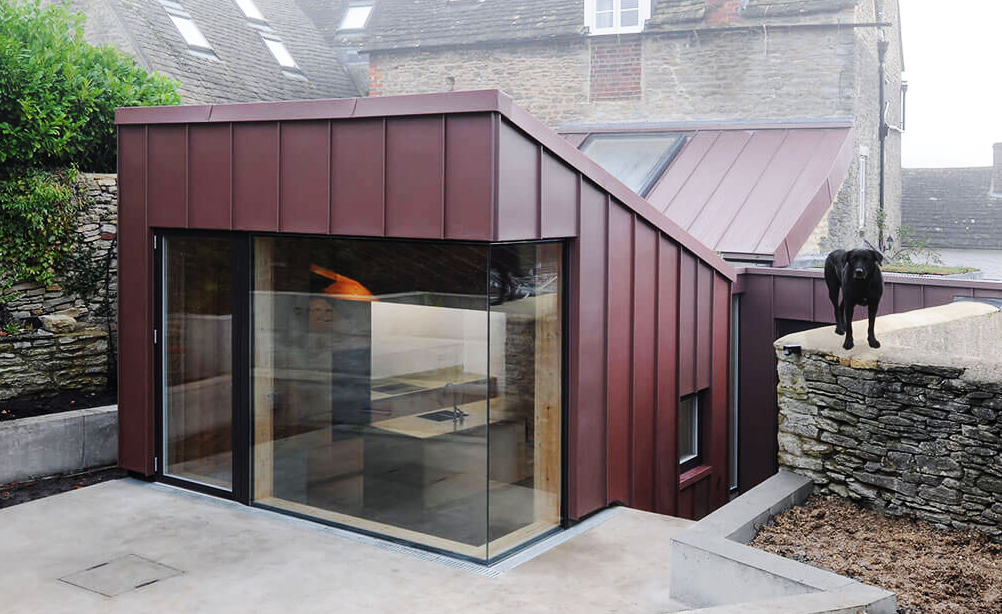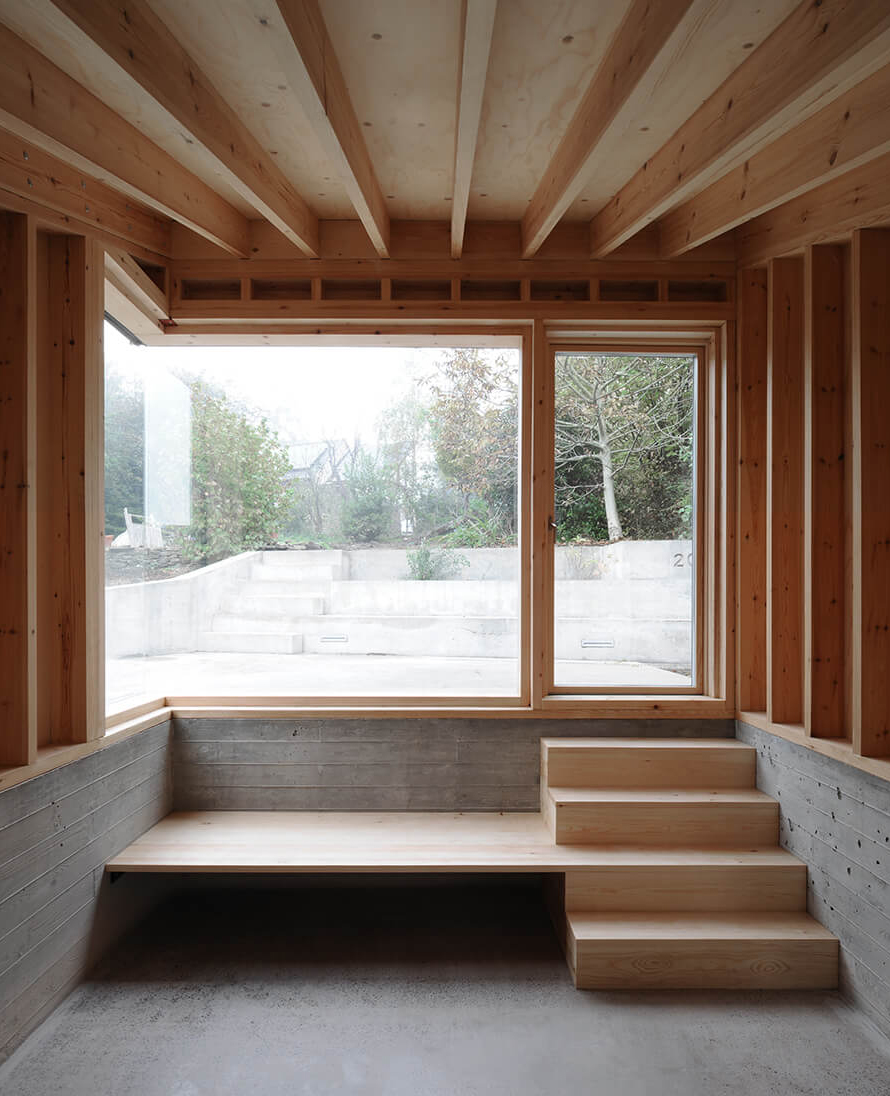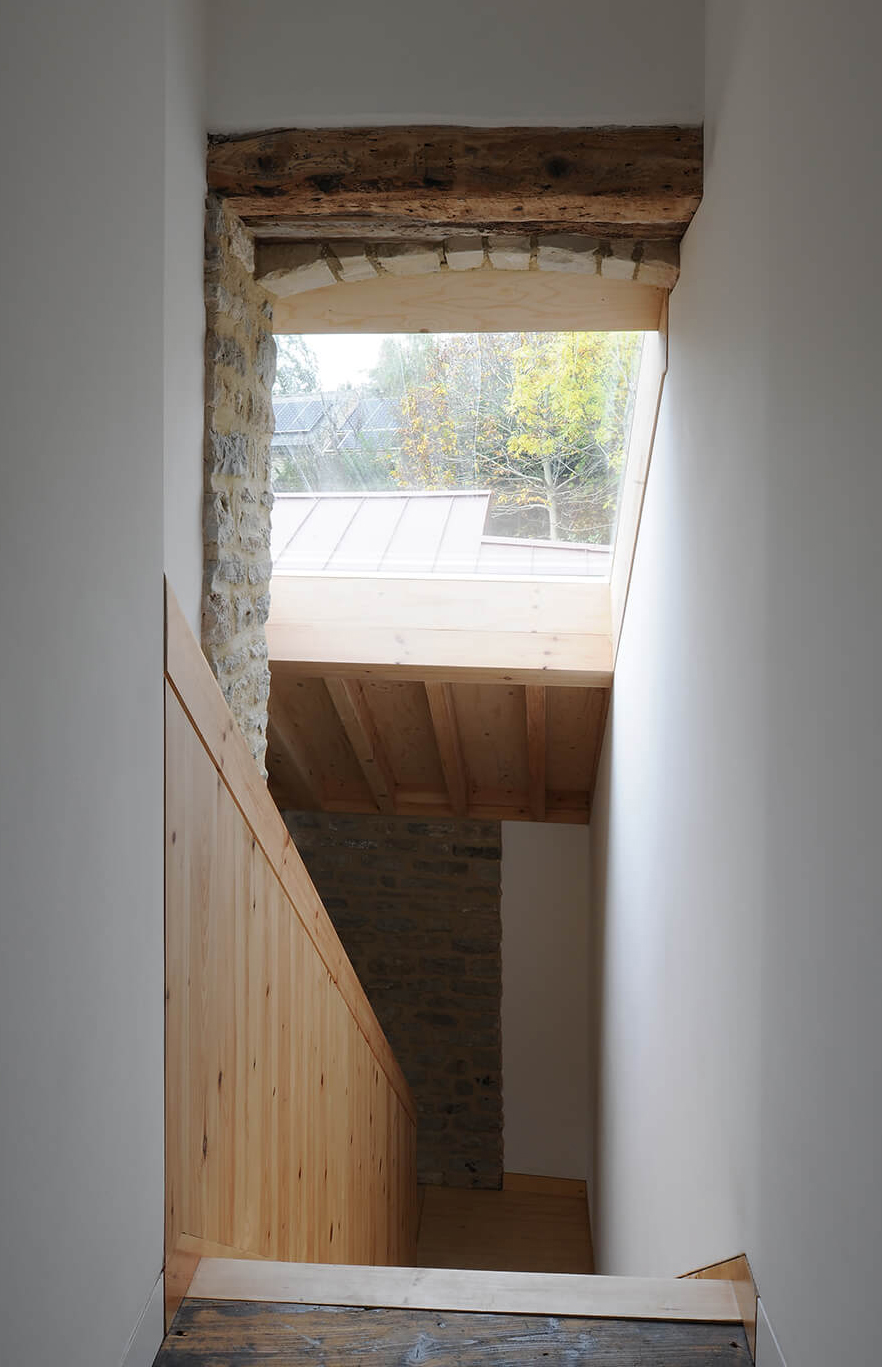Rose-coloured zinc extension elevates an old English house
In the British countryside, a house with many historic layers has been carefully modernised for family life whilst preserving the eccentricities of its original character
David Grandorge - Photography

In Wiltshire, UK, Prewett Bizley Architects has designed a new extension and refurbishment for a Grade II listed three storey Georgian townhouse located in the Malmesbury Conservation area. While the extension, clad in rose-coloured zinc, is a very 21st century addition to the house, the architects took a lot of care to celebrate, preserve or echo the house's historical evolutions.
The house has a colourful history that resulted in various eccentricities, both charming and awkward, say the architects. First established in the 1670s, it was converted in 1800 into a Georgian style house, yet was later subdivided into three dwellings and then back into a single family home.

It's 21st century evolution shows how existing and historic architecture can grow organically with time, and convert sustainably to new ways of life, with thoughtful re-planning and minimal demolition. Architects Graham Bizley and Robert Prewett, who founded the practice in 2005 and now have studios in London and Somerset, apply this way of thinking to each project they work on.
Their goal for this project was to create a more comfortable and modern home for a family. Several problems needed to be addressed to achieve this. The house's kitchen was cramped, the narrow corridor that lead to the living spaces was dark, and an abrupt level change in the garden completely disconnected the house from the outdoors.

The modern extension expands the kitchen into an uplifting dining space more suitable for family life and the pitch of the roof opens the space up to the garden bringing in views of the landscape. A new terrace features an outdoor dining space.
Respecting the history of the building, the architects designed a new top-lit central hallway that echoes the rustic character of the house. The original stone wall was repaired and three concrete portals added, along with the exposed spruce roof structure that both nod to the former agricultural use of the space. Elsewhere, modern paints and plasters were stripped back and the old stone roof was re-laid with insulation.
Combining a clean-cut extension, with insightful echoes, and some tending to history, the resulting design is a unique and unashamed celebration of its past.


INFORMATION
Receive our daily digest of inspiration, escapism and design stories from around the world direct to your inbox.
Ellie Stathaki is the Architecture & Environment Director at Wallpaper*. She trained as an architect at the Aristotle University of Thessaloniki in Greece and studied architectural history at the Bartlett in London. Now an established journalist, she has been a member of the Wallpaper* team since 2006, visiting buildings across the globe and interviewing leading architects such as Tadao Ando and Rem Koolhaas. Ellie has also taken part in judging panels, moderated events, curated shows and contributed in books, such as The Contemporary House (Thames & Hudson, 2018), Glenn Sestig Architecture Diary (2020) and House London (2022).
-
 The international design fairs shaping 2026
The international design fairs shaping 2026Passports at the ready as Wallpaper* maps out the year’s best design fairs, from established fixtures to new arrivals.
-
 The eight hotly awaited art-venue openings we are most looking forward to in 2026
The eight hotly awaited art-venue openings we are most looking forward to in 2026With major new institutions gearing up to open their doors, it is set to be a big year in the art world. Here is what to look out for
-
 This modern Clapham house is nestled indulgently in its garden
This modern Clapham house is nestled indulgently in its gardenA Clapham house keeps a low profile in south London, at once merging with its environment and making a bold, modern statement; we revisit a story from the Wallpaper* archives
-
 Step inside this perfectly pitched stone cottage in the Scottish Highlands
Step inside this perfectly pitched stone cottage in the Scottish HighlandsA stone cottage transformed by award-winning Glasgow-based practice Loader Monteith reimagines an old dwelling near Inverness into a cosy contemporary home
-
 This curved brick home by Flawk blends quiet sophistication and playful details
This curved brick home by Flawk blends quiet sophistication and playful detailsDistilling developer Flawk’s belief that architecture can be joyful, precise and human, Runda brings a curving, sculptural form to a quiet corner of north London
-
 A compact Scottish home is a 'sunny place,' nestled into its thriving orchard setting
A compact Scottish home is a 'sunny place,' nestled into its thriving orchard settingGrianan (Gaelic for 'sunny place') is a single-storey Scottish home by Cameron Webster Architects set in rural Stirlingshire
-
 Porthmadog House mines the rich seam of Wales’ industrial past at the Dwyryd estuary
Porthmadog House mines the rich seam of Wales’ industrial past at the Dwyryd estuaryStröm Architects’ Porthmadog House, a slate and Corten steel seaside retreat in north Wales, reinterprets the area’s mining and ironworking heritage
-
 Arbour House is a north London home that lies low but punches high
Arbour House is a north London home that lies low but punches highArbour House by Andrei Saltykov is a low-lying Crouch End home with a striking roof structure that sets it apart
-
 A former agricultural building is transformed into a minimal rural home by Bindloss Dawes
A former agricultural building is transformed into a minimal rural home by Bindloss DawesZero-carbon design meets adaptive re-use in the Tractor Shed, a stripped-back house in a country village by Somerset architects Bindloss Dawes
-
 RIBA House of the Year 2025 is a ‘rare mixture of sensitivity and boldness’
RIBA House of the Year 2025 is a ‘rare mixture of sensitivity and boldness’Topping the list of seven shortlisted homes, Izat Arundell’s Hebridean self-build – named Caochan na Creige – is announced as the RIBA House of the Year 2025
-
 In addition to brutalist buildings, Alison Smithson designed some of the most creative Christmas cards we've seen
In addition to brutalist buildings, Alison Smithson designed some of the most creative Christmas cards we've seenThe architect’s collection of season’s greetings is on show at the Roca London Gallery, just in time for the holidays